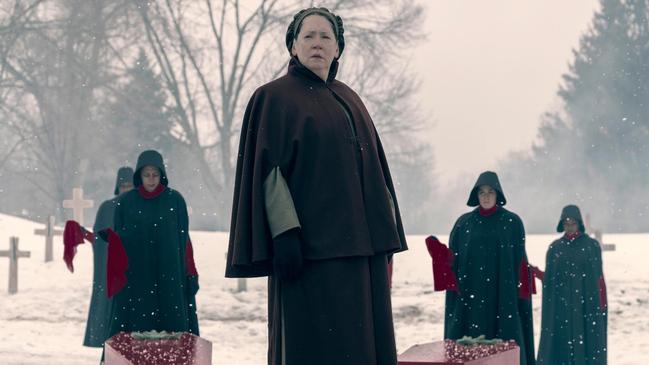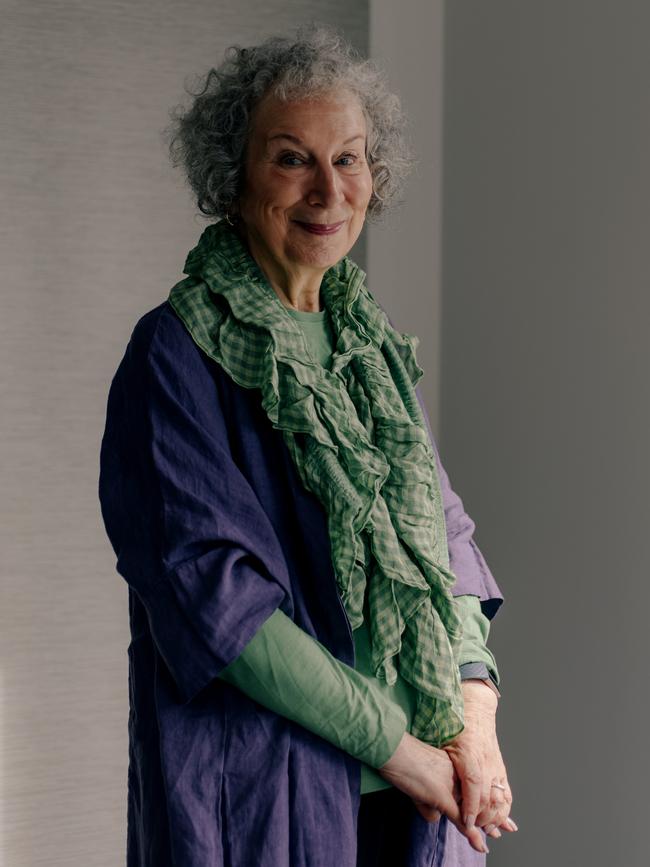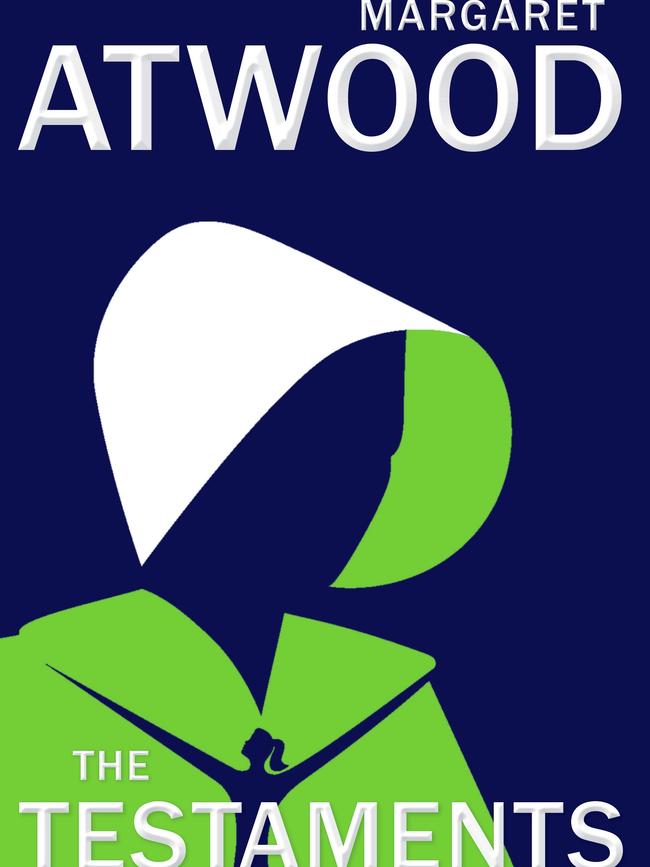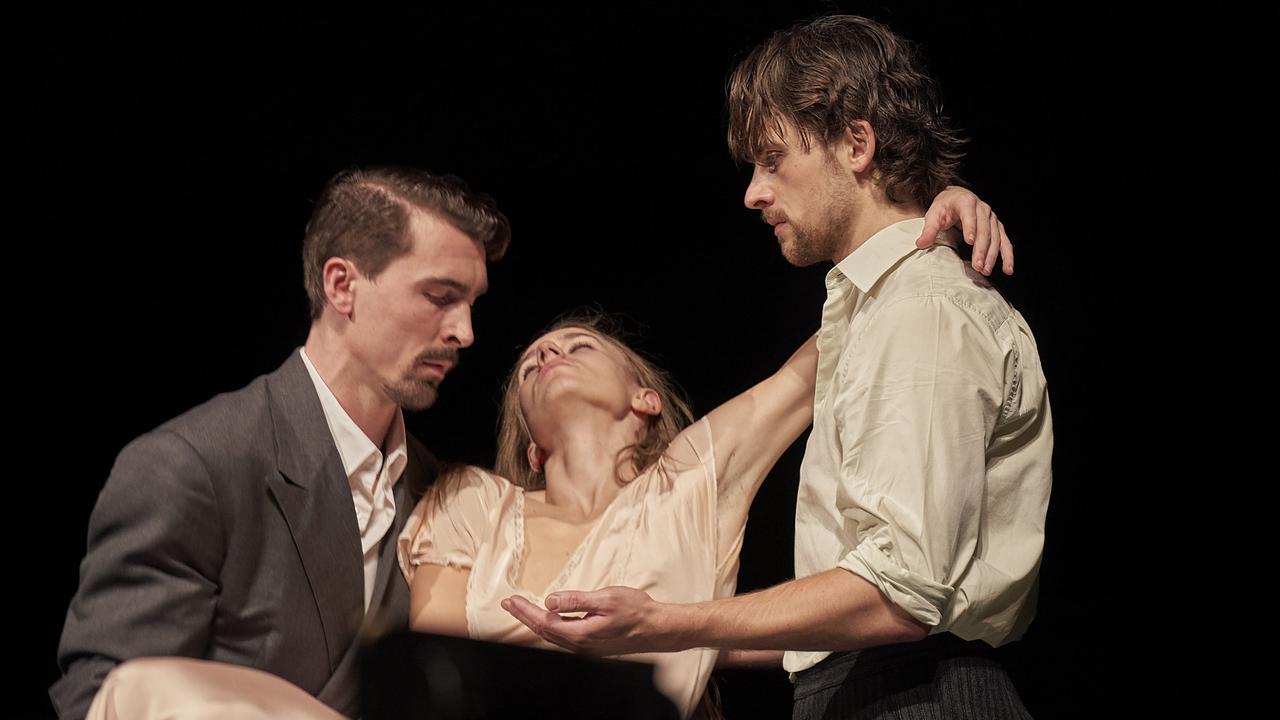An aunt’s story
The cruel Mother Superior of The Handmaid’s Tale is at the centre of Margaret Atwood’s long-awaited sequel.

T he cover design of Virago’s 1986 edition of Margaret Atwood’s The Handmaid’s Tale is hieratic, frieze-like: a study in middle-distance. A pair of handmaidens dressed in blatant red gowns walk side-on to the viewer, holding baskets filled with fruit.
Behind them, a phallic row of poplars obscures glimpses of neoclassical architecture, as if the trees marked the division to a world beyond. The world of ideas and appetites, that is — of public politics and private passions. The pair seem isolated, utterly, yet readers know handmaids are surveilled at all times. The cloistral hush is an enforced silence; the garden manicured for slaves.
Such a neat, contained and menacing image — and one that has stayed with me, even after the quarter of a century since I first read the work, as eloquent of the constricted frame and refrigerated fury contained within Margaret Atwood’s sixth novel, the book for which she is best known and justly celebrated.
The Testaments, Atwood’s much-anticipated sequel to The Handmaid’s Tale, takes place a decade and a half after the events of that novel. It takes a different tack to the ongoing Hulu television adaptation and subsequent expansion of the book, which has departed with increasing extravagance over the seasons from the mode and manner of its source text.
Viewers who thrilled to a kick-arse Elisabeth Moss as Offred, striding out to battle the patriarchy to a soundtrack by Nina Simone, may find the return to Gilead described in these pages dispiriting at first.


Fifteen years after Offred’s apparent escape from the theocratic state, women remain the chattel of men, their lives circumscribed and stunted. And those few capable of bearing children are still obliged to submit to insemination and surrogacy for politically connected families. Yet, looking beneath the hood, all is not well for the regime. Rolling shortages of foodstuffs. A growing grey economy. Deepening political corruption and intraparty fighting among those righteous men who, under the banner of “Sons of Jacob”, were once so certain of their moral purity that they overthrew the government of the United States to create a Godly Commonwealth.
And the by-products of industrial modernity continue to depress fertility rates. Even when offspring are conceived, cancers and birth deformities are rife. “Unbabies” are not publicly acknowledged but they are whispered about by the women of Gilead.
Our privileged perspective on the darkening situation is mainly provided by an unlikely source. Aunt Lydia, the cruel Mother Superior cum Grand Inquisitor of The Handmaid’s Tale, is revisited in the pages. We come to know her in an entirely new light.
Each evening, in deepest secrecy, using stolen ink and hiding the resulting manuscript inside a hollowed copy of cardinal John Henry Newman’s Apologia Pro Vita Sua, Lydia produces an account for posterity — a secret history of Gilead and an account of her formation and deformation as a woman under its aegis.
This is a remarkable turn of events. In The Handmaid’s Tale she remarked, chillingly, that “The Republic of Gilead … knows no bounds. Gilead is within you”. Her portion of narrative in The Testaments is the story of a woman trying to extricate her innermost self from the same totalising system she helped establish and still maintains:
I’ve become swollen by power, true, but also nebulous with it — formless, shapeshifting. I am everywhere and nowhere: even in the minds of Commanders I cast an unsettling shadow. How can I regain myself? How to shrink back to my normal size, the size of an ordinary woman?
It should be said that Aunt Lydia’s voice is electric. Just as Offred’s profound unfreedom as a Handmaid gave her interior efforts at resistance a particular clarity and charge, so too does Lydia’s situation — as a woman deeply compromised by her actions yet hanging on to some slender thread of decency in the hope that it might eventually lead her back to some less benighted state — grants real drama to recollections of her former life and current situation.
It is advancing age that frees her, a sense that her own survival is no longer so crucial as it once was.
Harsh and pitiless as she can be, politically astute and deeply manipulative as she has to be, Lydia is at her best when combining needle-sharp irony with genuine plaint:
In one of my bracing homilies to our Aunts some years ago, I preached against vanity, which creeps in despite our strictures against it. “Life is not about hair,” I said then, only half jocularly. Which is true, but it also true that hair is about life. It is the flame of the bodies candle, and as it dwindles the body shrinks and melts away.
Aunt Lydia’s manuscript may steal the show stylistically, but it is only one of three accounts interleaved throughout the text. Of the others, one tells the story of the childhood and youth of a woman named Agnes Jemima. Agnes is a true child of Gilead: highborn, relatively coddled, yet nonetheless lacking in any alternative to the world that surrounds and demeans her — a Miranda on her patriarchal island.
Agnes is fierce but idealistic by nature, if wounded by the early death from cancer of her kind adoptive mother. (Agnes was removed by force from her mother as a much younger girl.) It is painful and sometimes bleakly funny to watch her sincere piety brush up against the cynicism and bad faith of her elders and betters.
Forbidden things are open to the imagination. That’s why Eve ate the Apple of Knowledge, said Aunt Vidala: too much imagination. So it was better not to know some things. Otherwise your petals would get scattered.
But that automatic devotion to Gilead does not survive the attempt, by Agnes’s new stepmother, to marry her off at the age of 13 to one of the most senior figures among the Commanders. Commander Judd has already gone through a number of wives by the time this fresh match is planned, a Bluebeardian scorecard Agnes remains unaware of but that Aunt Lydia knows all too well.
That Lydia should intercede at this late point and accept Agnes as a member of her austere order — to train her to become an Aunt and find an alternative bride for the Commander — would seem to be an act of kindness quite out of character for her. But Lydia has her own plans for Agnes and, by bringing her into the Aunt’s fold, the older woman reveals something of her larger scheme.
If Agnes’s narrative falls somewhere between legal deposition and spiritual autobiography, the third story is vernacular and secular, and slightly lacking in texture for it. This is the tale of Nicole, a typical Canadian teenager who chafes against her kind if distant parents. When these are killed in a car bombing, the Mayday resistance group operating on both sides of the Gilead border is obliged to step in and appraise the girl of her true identity.
Nicole is the baby smuggled out of Gilead all those years before by Offred, before she went into hiding to continue her work. It was deemed safer for Offred’s daughter to be raised in domestic anonymity. But Baby Nicole has become a kind of byword through the years in Gilead — a pure Christian baby, stolen and trafficked to the godless nation to the north. Her picture is on every wall.
The Mayday organisation sees opportunity in this tragedy. It can ship Nicole to her birthplace as a mole, one who its mysterious source can use to potentially destabilising effect in Gilead. Reluctantly, churlishly even, but not without bravery, Nicole agrees. Returned to a theocracy that she knows only from school history classes and hearsay, under an assumed identity and the protection of Aunt Lydia, Nicole is entrusted to the care of Agnes Jemima, by now a mature if unworldly novitiate in her early 20s. So it is that Offred’s two daughters first meet under the roof of the woman who was her jailer, torturer and pimp.
This cloak-and-dagger strand is entertaining and polished: it also dilutes, to a certain extent, the core energy of Atwood’s dystopian vision. For all its thrills and enticements, for example, the failure of the television adaptation to honour the original text arises out of what contemporary TV drama does best: world-building.
As the universe of Gilead expands beyond its borders, and as the timeframe and the cast accordion out, the scale of the work shifts. Gone is the creepy middle distance, the cloaking of self out of obligation or survival: this is narrative as wide-screen, as long form. We know the characters too well; we are permitted to many narrative liberties.
Likewise, the author’s efforts to integrate some more vivid, hopeful possibility into The Testaments punches a hole in the cooler narrative that was its progenitor fiction. Light gets in, air is let out; the sealing vacuum is lost. Francis Bacon’s portraits, Samuel Beckett’s dramaturgy — their aesthetic success was always about ruthless maintenance of frame.
But none of this diminishes the sheer intelligence, guts and dark intensity of Atwood’s achievement. That she should be writing with such vigour and engagement with the culture as she enters her 80s is a matter for admiration and celebration. She has earned to right to sound a brighter note.
Geordie Williamson is The Australian’s chief literary critic.
The Testaments
By Margaret Atwood
Chatto & Windus, 432pp, $42.99 (HB)



